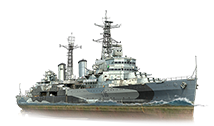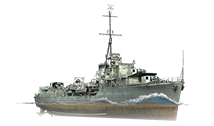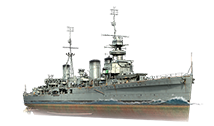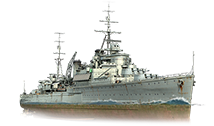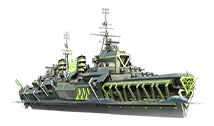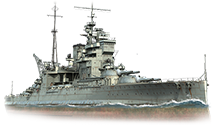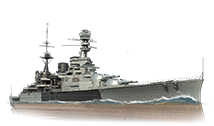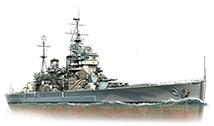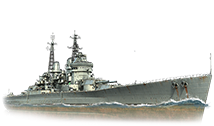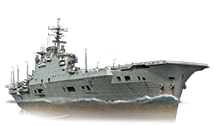艦艇:英國艦艇

Up to and during the First World War, the Germans attempted to challenge the might of the Royal Navy, only to be blockaded and stymied by the latter's superior tactics (drawn from centuries of experience) and numbers; however, the effectiveness of Germany's U-boats on unescorted shipping taught the British important lessons in convoy tactics - a lesson which the Americans would soon learn upon their entry into the Second World War. Although World War I severely depleted the British and consequently the Royal Navy, it was still a formidable force, and after the London and Washington Naval Treaties were no longer being observed by the other nations in 1938, it set about rapidly re-arming itself to reaffirm its place as the most powerful navy in the world. This did not come by easily however, as it suffered massive losses in the opening stages of World War II with the sinking of HMS Courageous, HMS Glorious, and HMS Hood in the Atlantic, and HMS Hermes, HMS Repulse and HMS Prince of Wales in the Pacific. Nevertheless, the Royal Navy's resilience won through, playing a major part in Operations Dynamo, Husky, Torch, Avalanche, and Overlord; the guarding of supply lines that enabled the British and her allies to fight in all theaters of the War; the British Pacific Fleet distinguished herself in every engagement she was involved in, despite facing various logistical and political difficulties; the systematic cornering and sinking of the Kriegsmarine's powerful battleships and battlecruisers; the seizing of many Enigma-related codebooks and machines; and the near-annihilation of the U-boat fleet in the Battle of the Atlantic. Both World Wars greatly taxed the British Empire, and her decline led to the Royal Navy handing the reins over to the US Navy as the most powerful navy in the world.
Cruisers
History
The history of Royal Navy cruisers is one of innovation and economy. Like those of competing naval powers, the Royal Navy had primarily — at the beginning of the 20th century — two basic types of cruiser: the armored cruiser and scout cruiser. Though there were many different designs reflecting the two simultaneous pressures of rapidly advancing technology and naval conservatism, nearly all would have found their place in the battle line (armored cruisers) or serving as the eyes of the fleet or with destroyers (scout cruisers).
By 1907, lessons absorbed by the naval powers of the world following the Battle of Tsushima — as well as the concurrent construction and design of HMS Dreadnought — ensured that the end of the era of the armored cruiser was at hand. For the Royal Navy, this was a time of even greater and more rapid design experimentation. Under the leadership of Sir John Fisher, the Royal Navy was to enter a period of reform and rearmament, the consequences of which would help to shape future of British cruiser development. Because of Fisher’s energetic support for the battlecruiser theory, cruiser design in the Royal Navy began to demonstrate a preference for smaller, faster ships. Cruisers of the Royal Navy built post-HMS Dreadnought but before World War I were stout, well-armed, and possessed of good sea-keeping qualities when compared to their counterparts in other navies. The 152mm rifle became the standard British cruiser armament during this period.
Service during World War I saw Royal Navy cruisers primarily engaged in the protection of Entente shipping, hunting German cruisers engaged in anti-shipping activities, engagements with light elements of the German fleet, and serving the traditional role of fleet scouts. Cruiser construction reached an all-time high, with over fifty produced before the end of the war in 1918; all of them of smaller, faster designs.
The interwar period became one of parsimony and restriction for the Royal Navy. Heavily in debt to the United States, possessing an enormous number of ships needing disposal, and lacking the economic expansion which had driven the pre-war naval construction programs, the United Kingdom readily agreed to become a signatory party to the Washington Naval Treaty of 1922. Cruiser production fell off sharply, and design priorities began to change. What would be needed now were cruisers which could be produced cheaply and possessed all-weather operational abilities, low operational cost, and high endurance. The primary armament of choice would remain the 152mm rifle, despite construction of the Hawkins class (which would carry 190mm rifles).
The signing of the London Naval Treaty in 1930 would have far-reaching consequences for cruiser design around the world. Cruisers would now be designated as "light" or "heavy" by their armament, with light cruisers mounting 155mm or smaller rifles and heavy cruisers mounting rifles greater than 155mm to a limit of 203mm. Though the Royal Navy would evolve the Hawkins design — eventually fielding 203mm-armed heavy cruisers beginning with the County class — the preference would remain with the smaller, cheaper to construct and operate 133mm and 152mm-armed light cruisers. This policy would remain in effect throughout World War II, as no heavy cruisers were built after the County and York classes.
World War II would see the cruisers of the Royal Navy come to prominence, engaging in nearly every type of mission conceivable — from naval gunfire support to convoy protection — and they would do so in every ocean of the world. Flexible and capable, British and Commonwealth cruisers would participate in nearly every action fought by their respective navies, from the defeat of Admiral Graf Spee, to the defense of Arctic convoys, to the protection of aircraft carrier task forces in the Pacific. Gun cruisers would remain in high service demand with the Royal Navy through the end of the war and into the post-war and Cold War years, with the last of them, the Tiger class, being retired in the 1970s.
Playstyle
British cruisers in World of Warships share many similarities with American and German cruisers, with fast-firing guns housed in quick-turning turrets; however, they fire only armor-piercing rounds. While the lack of high-explosive shells greatly reduces their versatility against more heavily armored ships or well-angled opponents, their AP shells' fuse lengths and penetration values are improved over other nations' such that shots are able to penetrate in places where they would normally bounce off. In addition, they do not have another mainstay of cruisers: the 模板:Defensive AA Fire consumable. This means that Royal Navy cruisers have to brute force their way through aircraft attacks, which isn't as bad as it sounds given that their AA firepower can be on par with American cruisers (and eventually exceeds them with Neptune and Minotaur). Their armor is quite thin with rather large citadels, although like American cruisers, this weakness is partially offset by their citadels being mostly below the waterline, with exposed parts reinforced with additional armor. However, this is where the bad news ends; while having average rudder shift timings, British cruisers have extremely good acceleration values (and good top speeds) that allow them to maintain near-maximum speeds even while doing sharp turns; their concealment values are among the best for cruisers of all nations; they have additional access to other consumables like 維修小組 (![]() ), 模板:Surveillance Radar, and 發煙機 (
), 模板:Surveillance Radar, and 發煙機 (![]() ) that most other cruisers can only dream of having, giving them unparalleled utility. Their torpedo armament is sufficient for the most part — having decent ranges with 60-knot speeds – and instead of choosing between wide and narrow spreads, captains can choose to fire off individual torpedoes or expend the entire launcher at once. Skilled captains will use these cruisers' agility and tools to get themselves into advantageous positions or out of sticky situations and dictate engagements on their own terms.
) that most other cruisers can only dream of having, giving them unparalleled utility. Their torpedo armament is sufficient for the most part — having decent ranges with 60-knot speeds – and instead of choosing between wide and narrow spreads, captains can choose to fire off individual torpedoes or expend the entire launcher at once. Skilled captains will use these cruisers' agility and tools to get themselves into advantageous positions or out of sticky situations and dictate engagements on their own terms.
